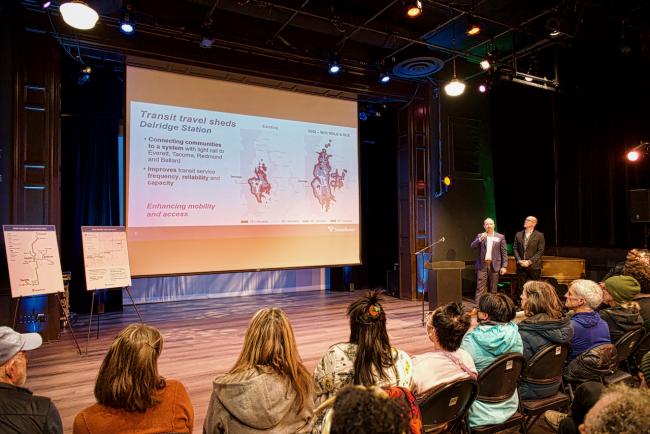Sound Transit details Multi-Million Dollar savings plan for West Seattle Link Extension; Avalon station cancelled amid other measures
Sound Transit held its WSLE visioning event to share changes to the plans for light rail in West Seattle. Brad Owen, Executive Director in Capital Delivery and Jason Hampton, Commercial Director for the WSLE spoke before a packed house at the Youngstown
Mon, 11/24/2025
Sound Transit officials unveiled detailed plans for significant cost reductions and design optimizations for the West Seattle Link Extension (WSLE) at a packed community forum held Monday, November 17th, at the Delridge Neighborhood Development Association venue at the Youngstown Cultural Arts Center. The forum, hosted by King County Councilmember Teresa Mosqueda, offered West Seattle residents a direct look at the agency’s ongoing efforts to close a massive funding gap while keeping the project on track.
The West Seattle Link Extension is designed to add 4.1 miles of light rail service and connect four stations (though this number is subject to change based on optimization decisions). The WSLE is currently estimated to cost between $7.1 billion and $7.9 billion before cost savings levers are applied, significantly higher than the $4.2 billion specified in the 2021 Financial Plan.
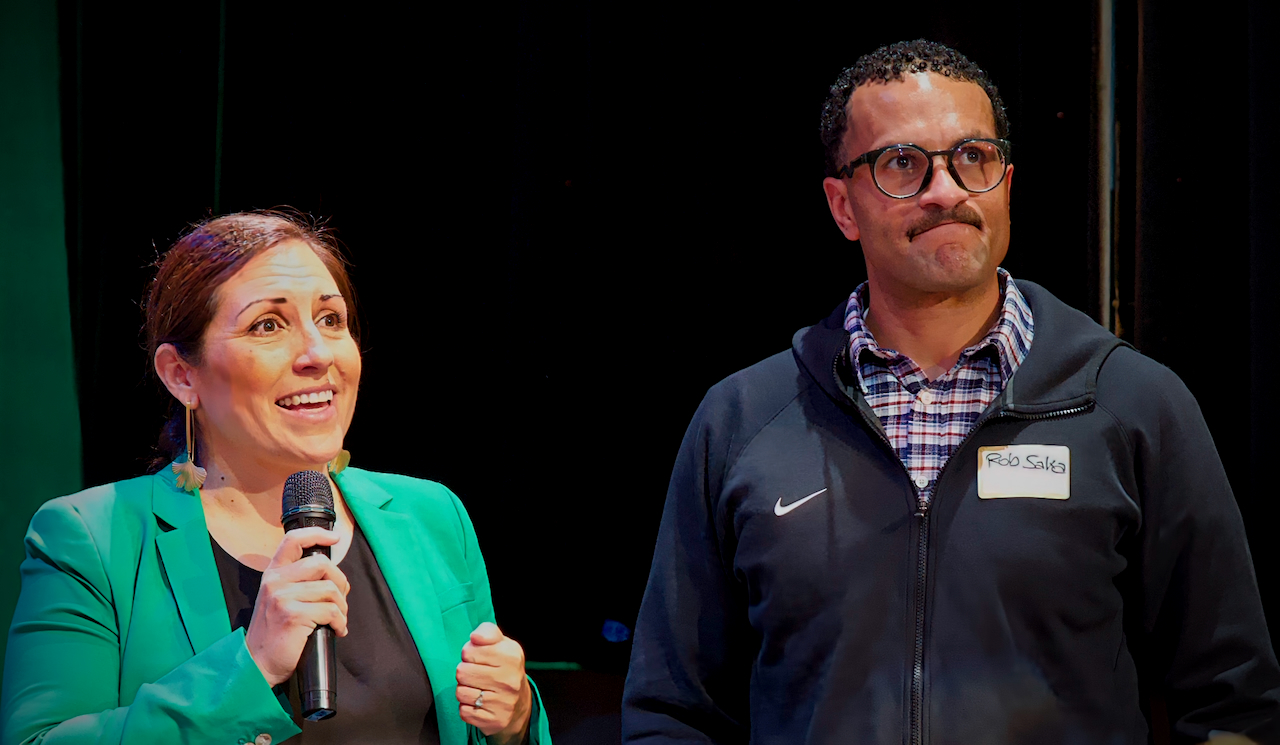
"The reason that we're having this form is because we have been able to get bits and pieces... that they're putting together some pieces," said Councilmember Teresa Mosqueda. "And this tonight is an opportunity for West Seattle residents to hear more of the initial thinking, the deliberative process, and to have actual details to complement some of the rumors and stories that we've all been reading".
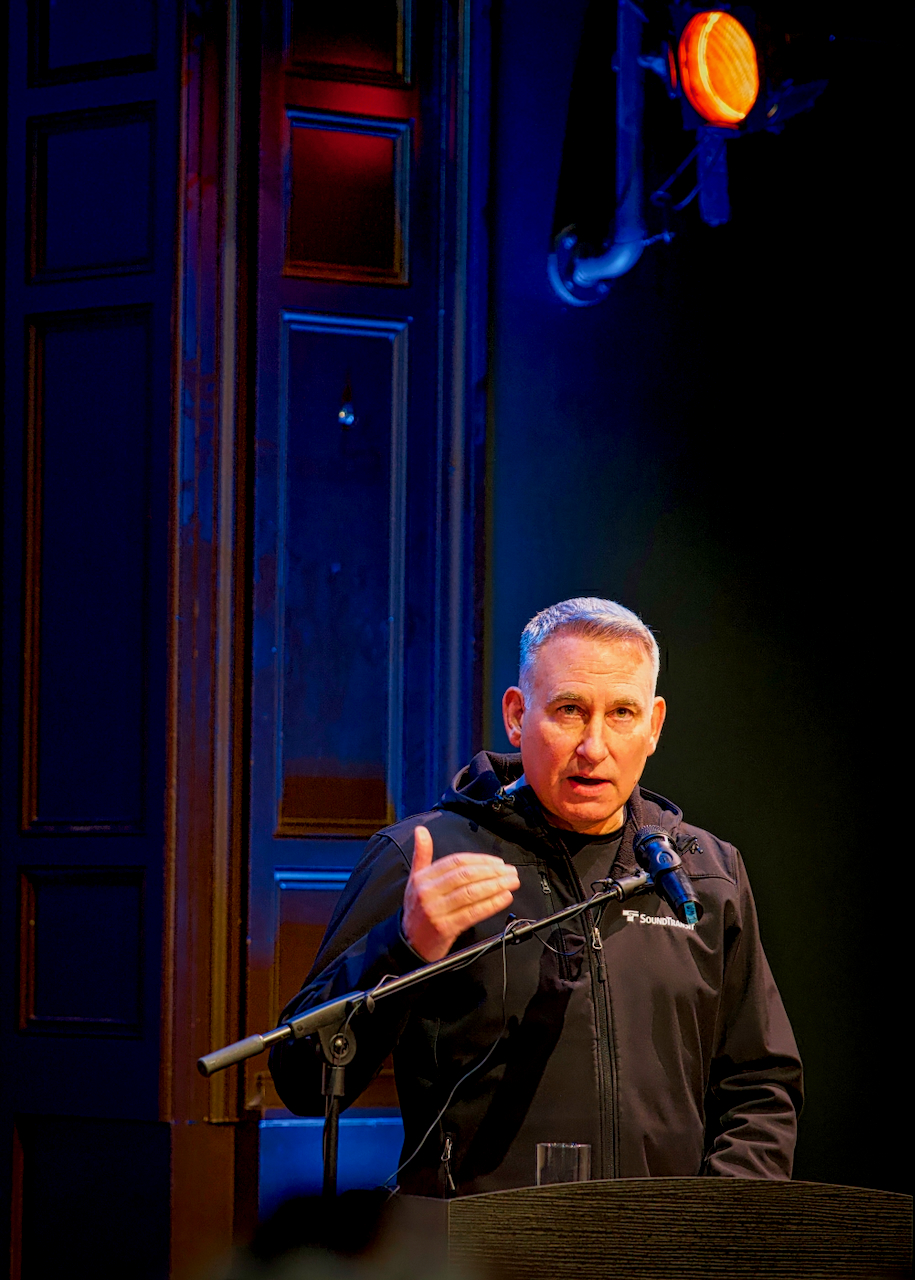
Sound Transit CEO Dow Constantine, who directed staff to reduce costs, stated that the agency is focused on delivering reliable, accessible transit that complements regional amenities. "The information our staff will share today, and I will tell you, it's exciting. The West Seattle link extension cost savings work plan is an important piece of solving this puzzle," Constantine noted.

Brad Owen, Executive Director in Capital Delivery, attributed the high costs to massive inflation experienced during the COVID era, stating: "Costs have escalated significantly since co supply chain issues tariff issues have really driven construction cross costs across the board up not just for transit but for for everything".
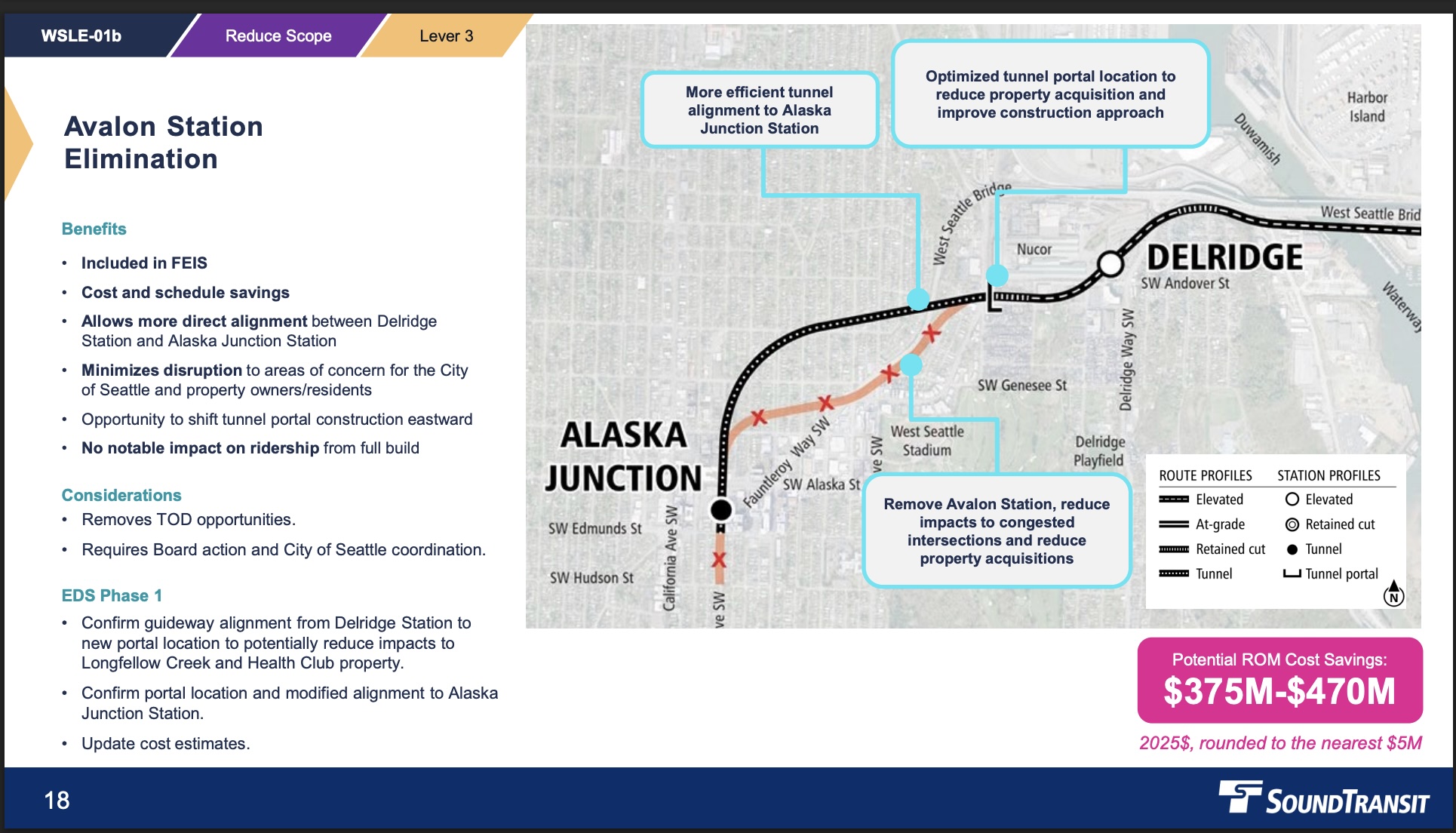
Primary Cost Savings Measures Unveiled
The proposed cost savings opportunities, organized into "levers" based on implementation complexity, aim to reduce the total project cost. The most substantial single cost-saving proposal involves a major scope change:
1. Elimination of Avalon Station and Tunnel Alignment Optimization (Lever 3)
The proposed elimination of the Avalon Station is estimated to save between $375 million and $470 million. This measure, categorized as requiring "External Coordination" due to its impact on scope, allows for a more efficient tunnel alignment between Delridge Station and Alaska Junction Station.
Jason Hampton, Commercial Director for the WSLE, confirmed that ridership modeling suggests minimal impact from the station removal. "We really don't see much of a ridership drop with eliminating the one station," Hampton said. He added that the majority of ridership is expected to shift to either Alaska Junction or Delridge, and removing the stop "actually speeds up the trip". The elimination of the station also allows the agency to investigate moving the tunnel portal construction eastward to potentially reduce impacts on the Longfellow Creek and Health Club property.
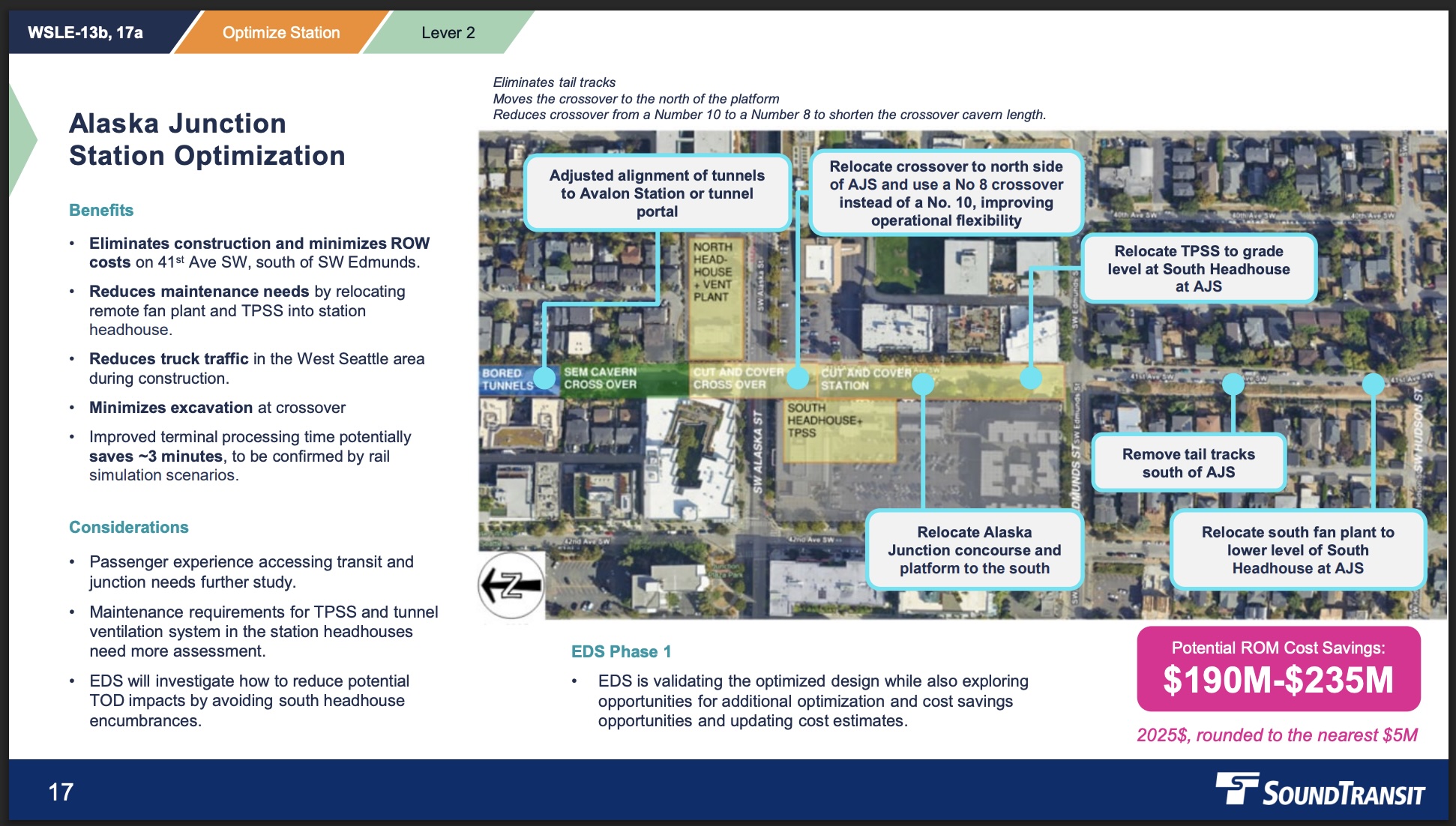
2. Alaska Junction Tunnel Alignment Changes and Property Acquisition Reductions
Optimization plans for the Alaska Junction Station could yield $190 million to $235 million in savings. This includes design changes that relocate the crossover track work (which allows trains to turn around) to the north side of the station.
This redesign is critical because it eliminates construction and minimizes Right-of-Way (ROW) costs on 41st Ave SW, specifically south of SW Edmunds. As explained by Sound Transit staff, this optimization avoids the need for a deep open-cut construction under 41st Avenue Southwest, which would have required the acquisition of properties along the entire length of one side of the street. Hampton emphasized that this change shows the agency's ability "to not only reduce cost but really reduce community impacts".
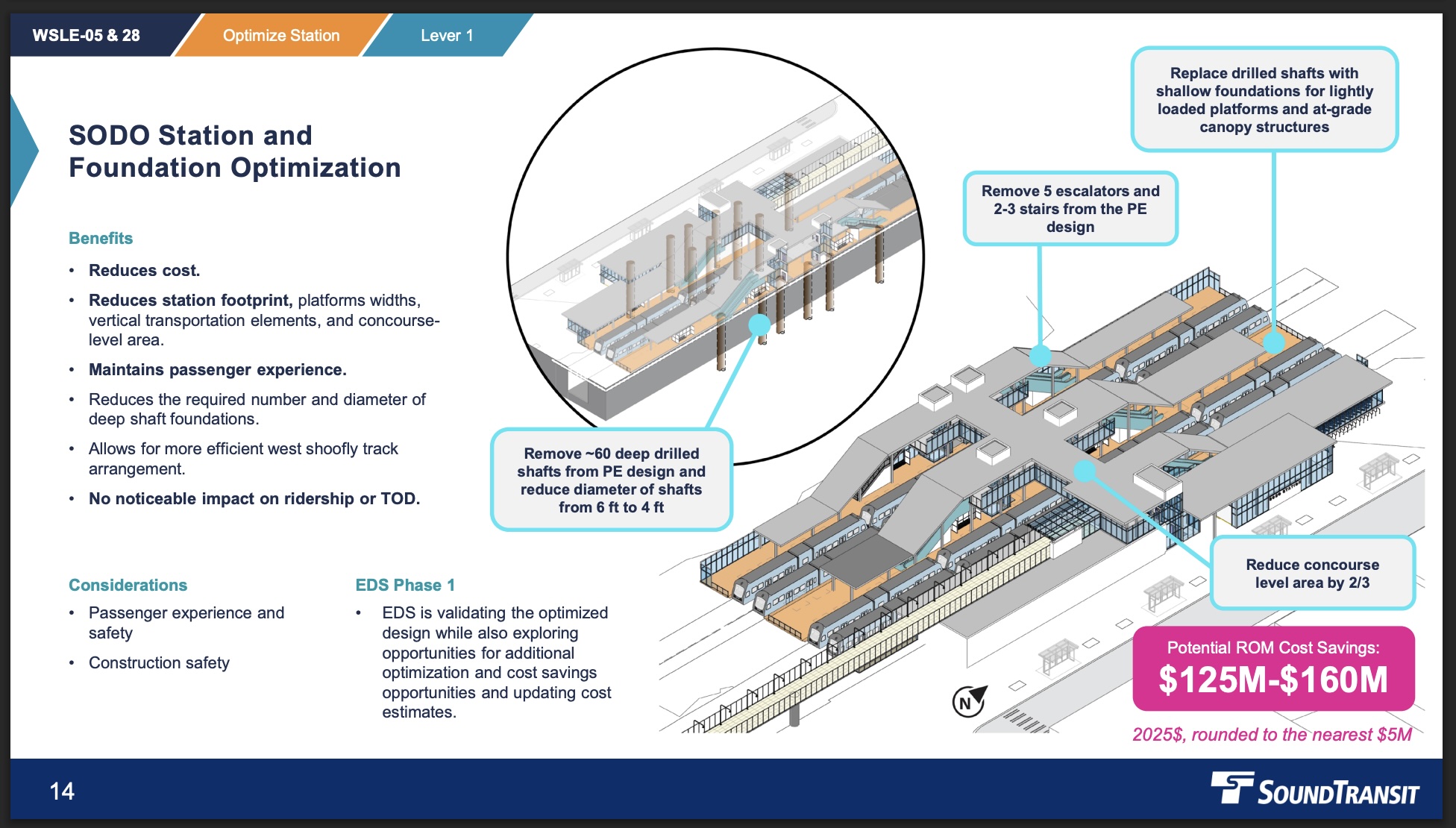
3. SODO Station and Foundation Revisions (Lever 1)
Design optimizations for the SODO transfer station aim to save between $125 million and $160 million. These revisions reduce the required footprint and complexity of the station while maintaining passenger experience. Key measures include:
• Reducing the concourse level area by two-thirds.
• Replacing deep drilled shafts with shallow foundations where platform and canopy loads are lighter.
• Removing approximately 60 deep drilled shafts and reducing the diameter of others.
• Eliminating five escalators and two to three stairs from the Preliminary Engineering (PE) design.
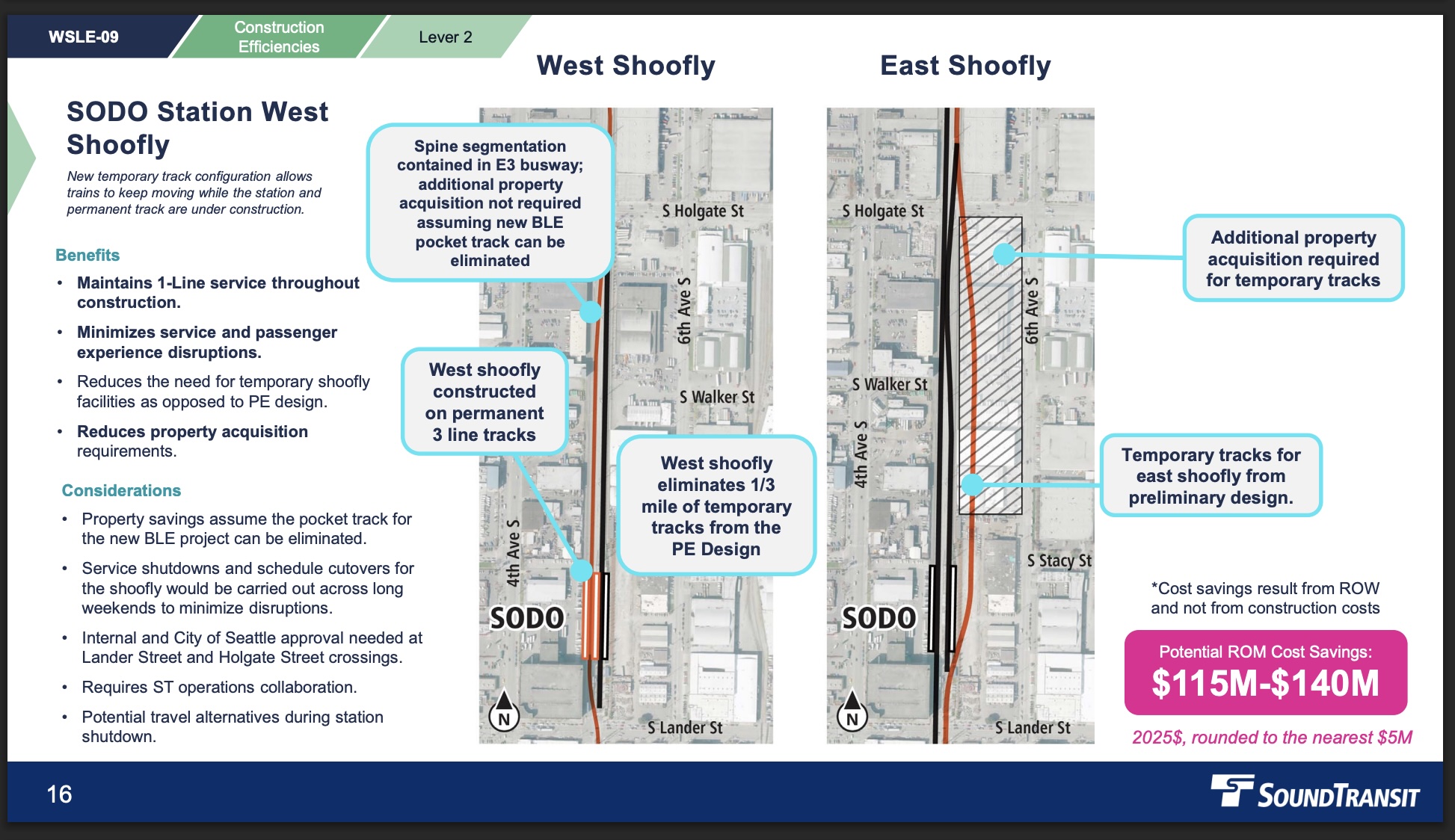
4. SODO West Shoofly Track Optimization
The redesign of the temporary tracks (known as shoofly tracks) needed to maintain the 1-Line service during SODO station construction is estimated to save $115 million to $140 million. This optimization reduces the need for temporary facilities and eliminates about a third of a mile of temporary tracks from the PE design. This approach allows the west shoofly to be constructed on permanent tracks, reducing property acquisition requirements and minimizing service disruptions.

5. Aerial Guideway Optimization
Redesigning the Duwamish Crossing and associated aerial guideway foundations could save $130 million to $160 million. This lever focuses on using precast segmental construction (modular construction built offsite) to reduce ground and environmental impacts. The design also seeks to optimize foundation spacing to reduce the size and number of massive columns required for the elevated guideway between Delridge and SODO, minimizing impacts to the surrounding community and infrastructure.
Next Steps and Community Engagement
The total cost savings projected from implementing these various project-level levers (excluding phasing) ranges from an 8% to 11% reduction in total project cost (Lever 2) up to a 13% to 17% reduction (Lever 3, which includes eliminating Avalon).
Councilmember Mosqueda thanked the Sound Transit team for providing the specifics: "Folks, this is literally the most detail I've seen for this area". She acknowledged that change is difficult but noted the critical need for reliable transit.
Sound Transit confirmed that while they are moving forward with design optimizations, major decisions regarding phasing or scope reduction, like the elimination of Avalon Station, will require Board action and external coordination with the City of Seattle. Staff emphasized the importance of staying on schedule, noting that delays can cost tens of millions of dollars monthly due to inflation.
"We need these type of details to be informed for conversations that we have with our neighbors, that we have with small businesses, so that we can better understand where we're at in the process, what the cost potentially could be, and ways that we can engage in the future," Mosqueda concluded

